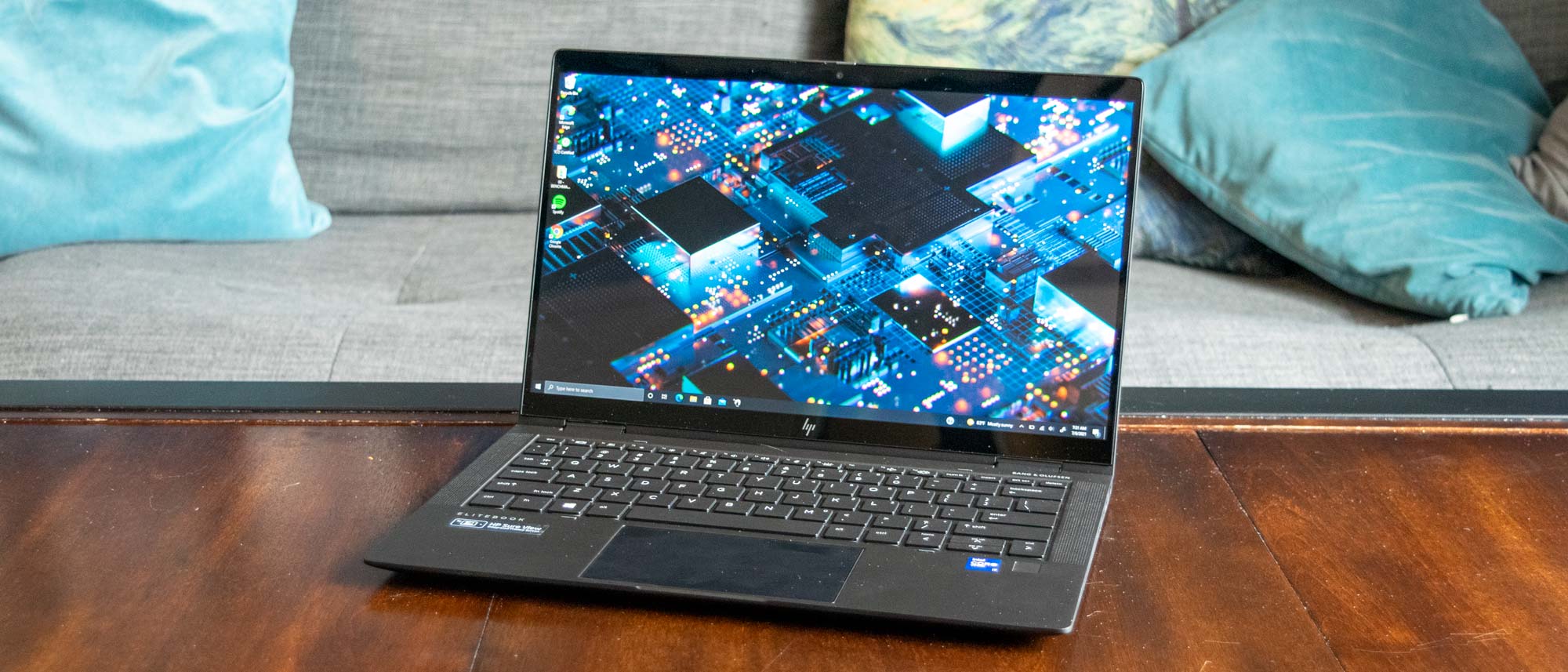Tom's Guide Verdict
HP improves on the previous iteration of its Elite Dragonfly 2-in-1 with a superior processor and some solid quality-of-life improvements — but the price tag is hefty.
Pros
- +
Lightweight
- +
Whisper-quiet
- +
Impressive battery life
- +
Great webcam
Cons
- -
Pricey
- -
Unimpressive performance
- -
Can get a bit hot under heavy loads
Why you can trust Tom's Guide
Price: $2,940 (as tested)
Display: 13.3-inch FHD IPS (1920 x 1080)
CPU: 11th Gen Intel Core i7
GPU: Intel Iris Xe integrated graphics
Memory: 16 GB
Storage: 512 GB
Ports: (2) USB-C, (1) USB-A, (1) Nano Sim, (1) HDMI 2.0, (1) 3.5mm headphone jack
Dimensions: 11.98 x 7.78 x 0.63 inches
Weight: 2.5 pounds
HP is no stranger to the business of ultrabooks, and that expertise is front and center with the HP Elite Dragonfly Max. This premium ultraportable packs serious 11th gen Intel power and over 13 hours of battery life in a svelte package that weighs only 2.5 pounds.
This HP Elite Dragonfly Max (from $2,409, $2,950 as tested) brings a number of improvements to the diminutive 2-in-1 that will benefit anyone who needs to take care of business outside of the office or boardroom. Namely, an improved webcam and front-facing microphone, as well as a built-in privacy screen and 5G eSIM support that allows you to remain connected without a network or external hotspot.
This makes the HP Elite Dragonfly Max an ideal choice for someone who values mobility, discretion and versatility.
The Dragonfly Max is the pricier sibling of the Elite Dragonfly G2 that was also made available back in January. Both models bring some excellent quality-of-life features for business professionals, as well as improvements to battery life. However, the price may prove a bit prohibitive for the average user. If you're on the fence, read on for our full HP Elite Dragonfly Max review.
HP Elite Dragonfly Max review: Price and configurations
- The HP Elite Dragonfly Max costs at least $2,400
- 5G option costs $440
As of this writing the HP Elite Dragonfly Max starts at $2,409 with an 11th gen Core i7 CPU, 16GB of RAM, Intel Iris Xe graphics and 512GB of NVMe SSD storage.
The model we tested will set you back a cool $2,950, making it one of the more expensive configurations available. This means the Dragonfly Max costs roughly $1,000 more than comparable HP 2-in-1s like the HP Spectre x360 14, and $500 more than the G2 version of the Dragonfly. But that extra cash gets you a 5MP webcam and an extra mic, as well as a beefier CPU and mobile broadband capability. While the usefulness of these extra benefits will go largely unnoticed by most users, they can prove invaluable to anyone that spends an excessive amount of time in Zoom meetings or away from a trusted Wi-Fi network.
The HP Elite Dragonfly Max is available for purchase via HP's website or select third-party retailers. There are a handful of alternate configurations available for the Dragonfly Max; they offer many of the same features, but allow you to upgrade the default 16 GB of RAM to 32 GB, and replace the i7-1165G7 CPU with the more powerful i7-1185G7 instead. Of course, there are configurations that allow you to expand the onboard storage as well, up to a 2TB SSD, provided you’re willing to shell out an extra $865.
If you need your laptop to be capable of connecting to a cellular network in the absence of Wi-Fi, be prepared to pay a minimum of $155 for a mobile broadband card — or $440 for a 5G LTE mobile broadband card.
HP Elite Dragonfly Max review: Design
- Svelte and easy to carry at just 2.5 pounds
- Matte black finish is stylish but picks up fingerprints easily
While it can certainly handle working from home, the Dragonfly Max is a laptop that hates being tied down. This laptop shines as an ultraportable platform for handling whatever business you have to conduct, no matter where it takes you. The featherweight ultrabook doesn’t take up much space, but takes advantage of every square inch of its diminutive footprint.
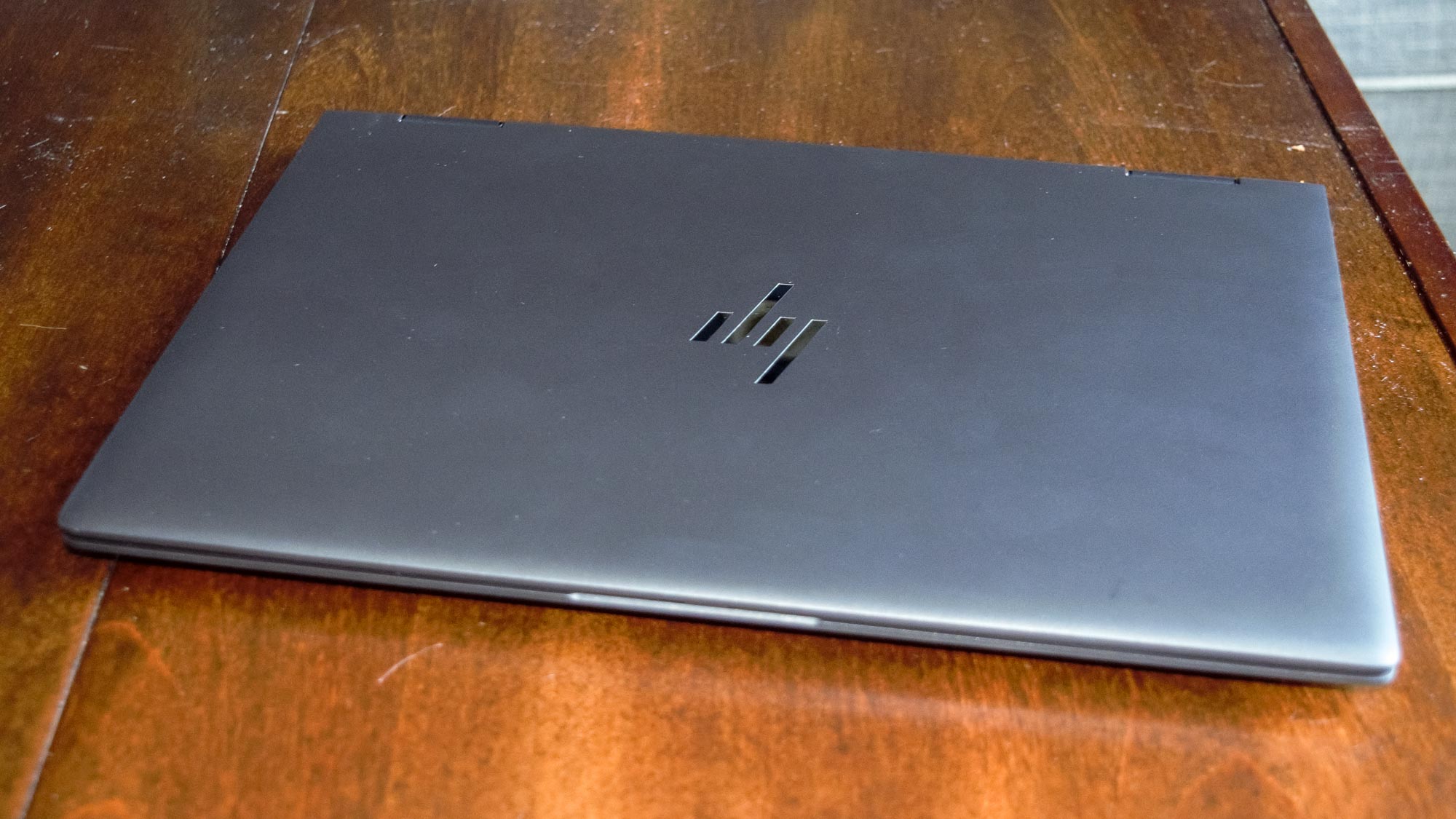
A big consideration in the development of the Dragonfly line of laptops is weight. Designed to follow you everywhere without weighing you down, the Dragonfly Max has managed to keep its weight on par with the original HP Dragonfly at just 2.5 pounds (nearly a pound lighter than the Samsung Galaxy Book Flex 2-in-1) even with the considerable performance improvements.
The overall design doesn’t draw too much attention but remains elegant, both in terms of its aesthetics and engineering. The Dragonfly Max is currently only available in matte black, making it both a powerful statement as an accessory and ultraportable. The matte black finish is definitely stylish, but it doesn’t do much to resist fingerprints. It was difficult to handle the laptop or type for extended periods without leaving behind a visible wealth of forensic evidence.
HP Elite Dragonfly Max review: Ports
- Well-rounded port selection enough for most use cases
- USB-A port for older USB accessories
The HP Elite Dragonfly Max doesn’t have a ton of extra ports, but it has enough connectivity options that you should be able to get things done without obsessing over what to plug in where.
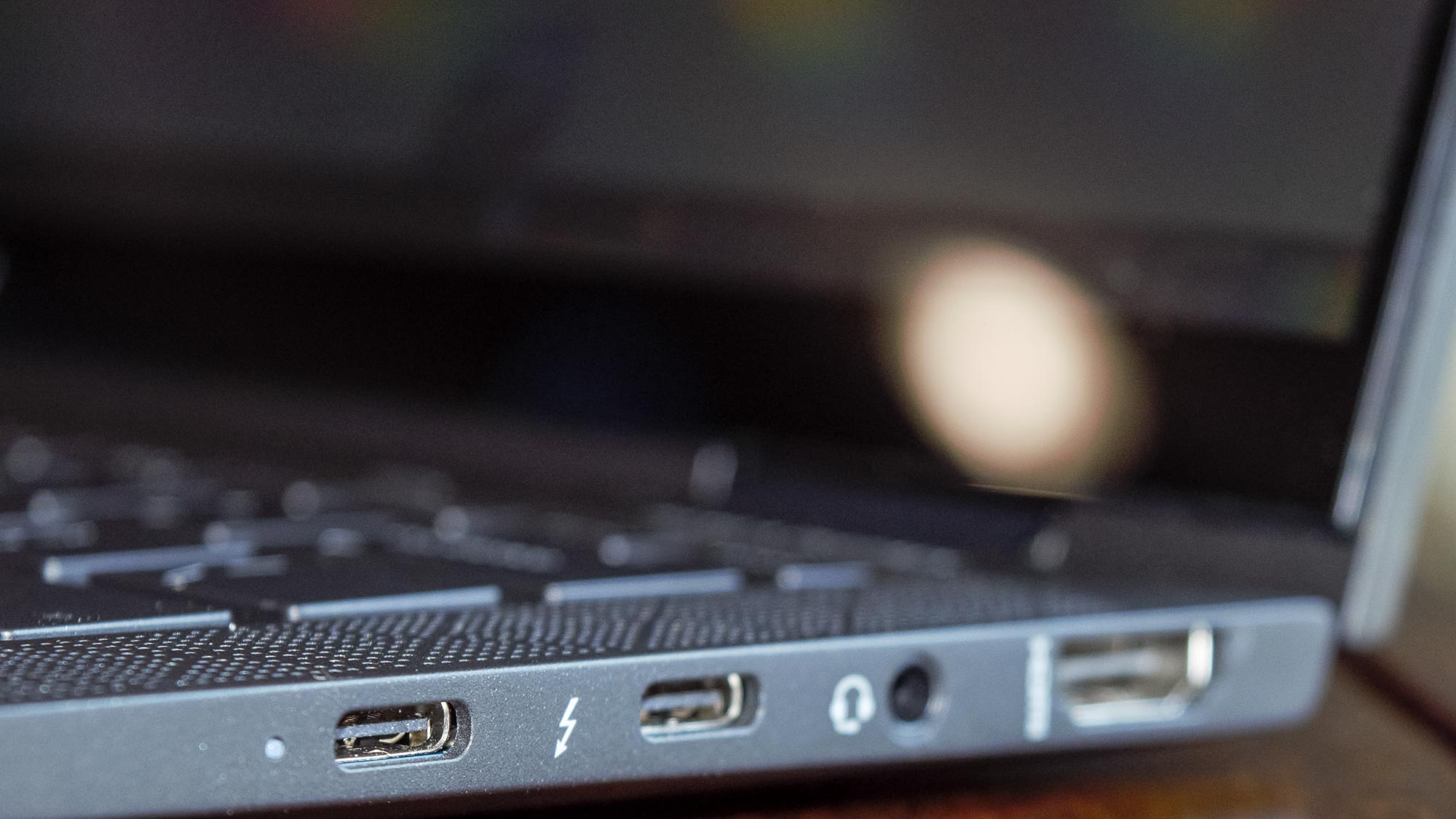
A pair of USB-C Thunderbolt 4 ports means you can remain docked with a hub while charging a device at the same time. There’s a single USB-A port for flash drives or a wireless adapter.
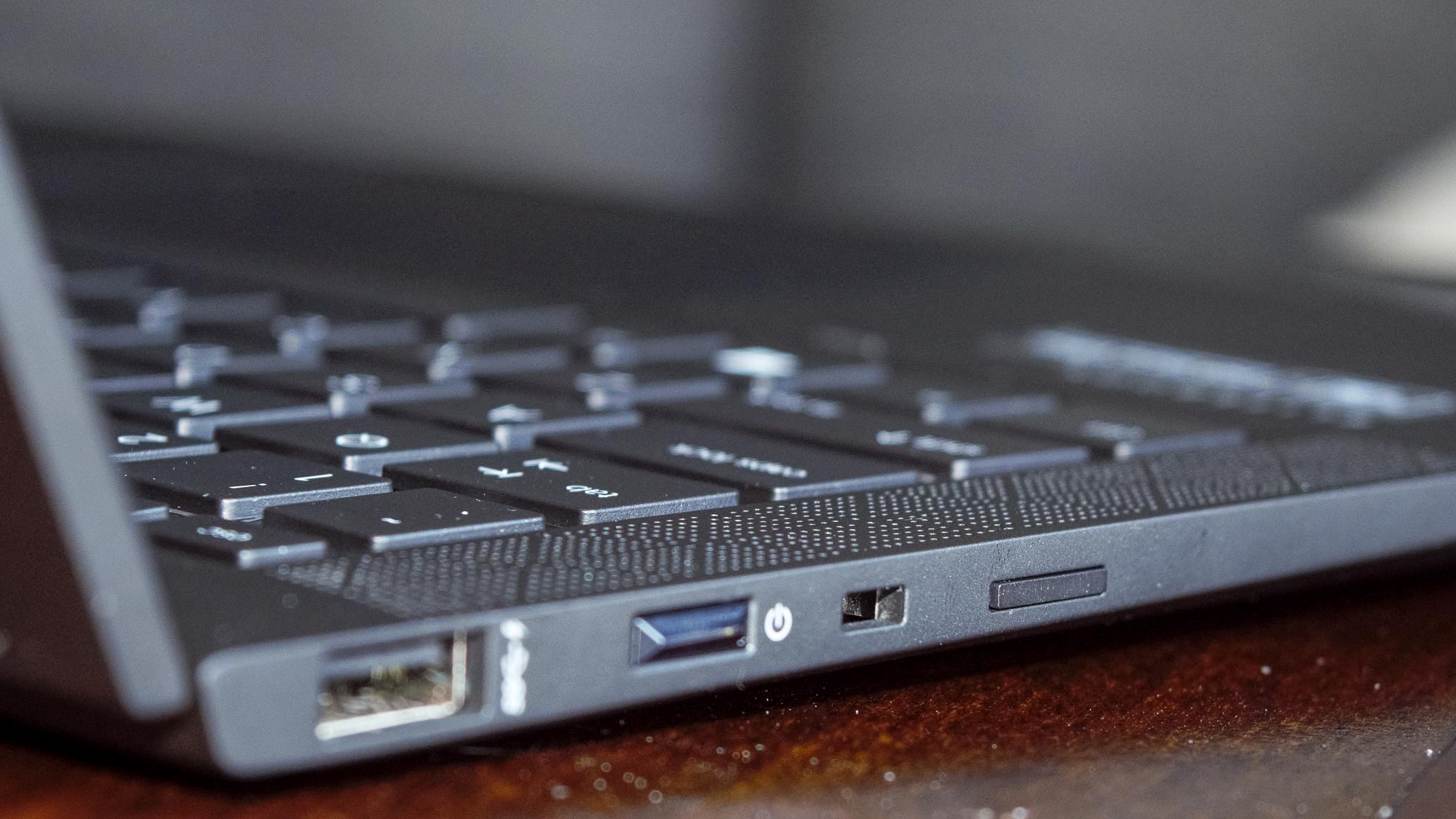
The Dragonfly Max also sports a 3.5mm audio jack, in case you’ve forgotten to charge your headphones, and an HDMI 2.0 port for presenting or hooking up to an external monitor.
HP Elite Dragonfly Max review: Display
- 1080p 13-inch touchscreen is bright with vibrant colors
- HP SureView privacy screen is handy
The Dragonfly Max makes the most of its limited screen real estate with a clean slim-bezel design, but the resolution of the 13.3-inch touchscreen is restricted to FHD.
The Dragonfly Max's IPS panel offers superb color reproduction. When put to the test with our colorimeter, the Dragonfly Max produced 115.3% of the sRGB color gamut. For comparison, the Dell XPS 13 with OLED produced 117.3% and the MacBook Air with M1 managed to hit 114.3%. This makes the Dragonfly Max display a vivid option for streaming content and providing a rich image, but it probably won’t be the first choice for photo editing or graphic design.
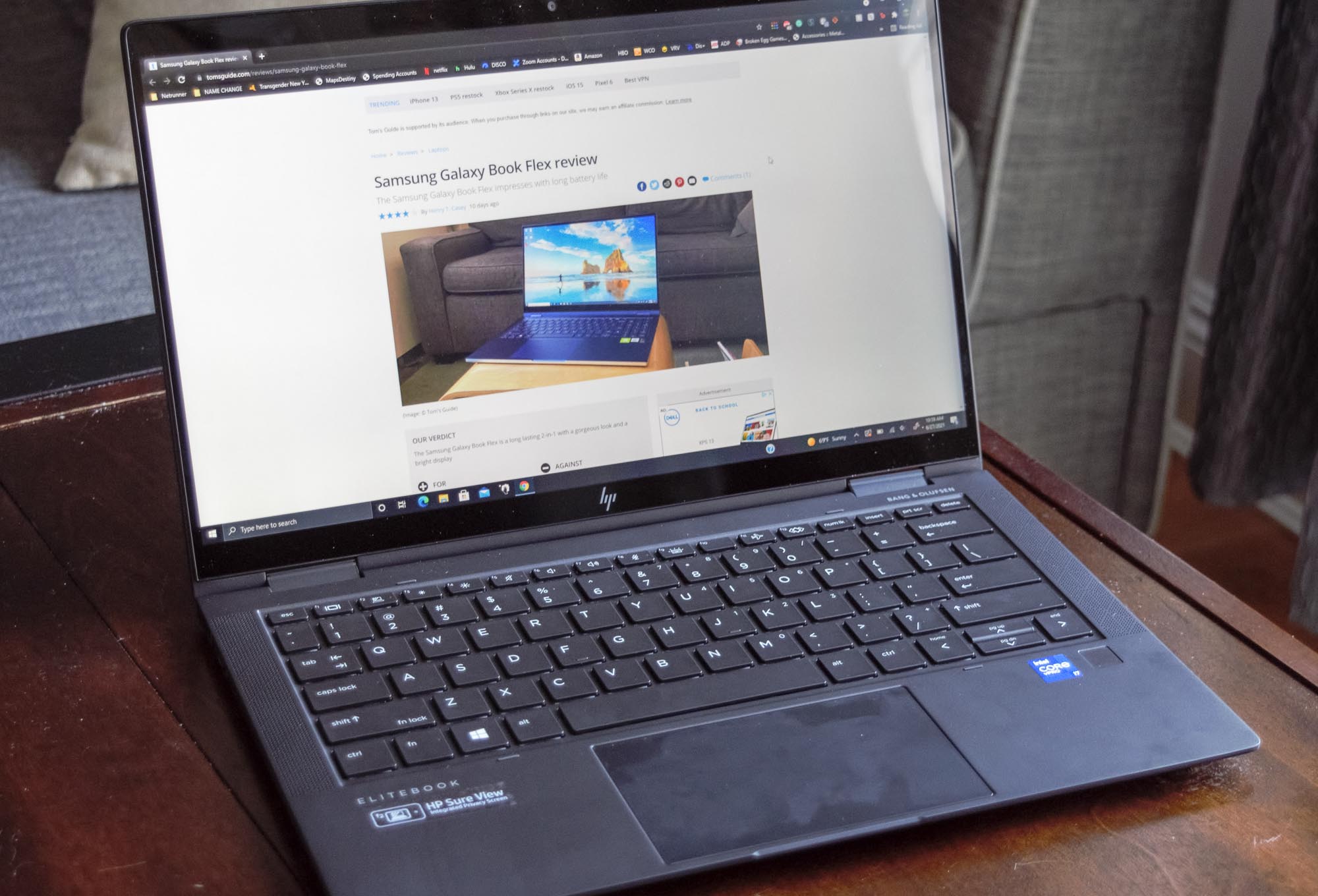
The screen managed to maintain an average of 706.6 nits of brightness in our testing, which feels a bit excessive when compared to the panels on the ThinkPad X1 Yoga (402 nits), or the Dell XPS 13 (516 nits). Cranking up the brightness to maximum, I was only able to look at my screen for short periods before I felt like I was placing undue stress on my eyes. The utility of this wasn’t clear to me until I took the laptop outside, at which point I appreciated the fact that the screen is clearly legible, even under direct sunlight.
The display also includes HP’s Eye Ease filter, which helps keep blue light to a minimum, and while most blue light filters have the unwanted effect of giving your screen a brown-ish tint, I didn't notice any discernable tint on the Dragonfly Max — in fact, I only noticed the filter was on after checking to see that it was enabled.
One very cool feature that might get overlooked is the HP SureView integrated privacy screen. At the press of a button, the screen dims and becomes invisible when viewing at a 45-degree angle. While hardly this laptop’s most exciting feature, it’s sure to be a welcome addition for anyone that values discretion.
HP Elite Dragonfly Max review: Audio
- Speakers deliver great sound quality
- No tinniness or distortion, even at max volume
Once again HP has brought in the audio experts at Bang & Olufsen to flesh out the design for their ultraportable speakers. It would be easy to dismiss this as a pedigree in name only, but after some thorough testing, I can assure you that the speakers on the Dragonfly Max deliver.
Cranking up the volume on laptop speakers typically makes things sound tinny like they’re rattling around in the chassis. But I experienced no distortion with the speakers, even while listening to my embarrassing pop-punk playlist at max volume.
HP Elite Dragonfly Max review: Webcam
- 5MP webcam delivers high-quality video
- Extra set of mics help you sound your best during video calls
HP has also upped the game in regards to its microphone and webcam, and the Dragonfly Max offers improvements here that you won’t find on any of HP’s comparable laptops or even Apple’s vaunted new M1 MacBook.
Namely, an extra pair of microphones that provide exceptional clarity even with multiple presenters, and a high-resolution 5MP webcam which definitely gives the Dragonfly Max bragging rights as one of the best laptops for the work-from-home era.
HP Elite Dragonfly Max review: Keyboard, touchpad, and touchscreen
- Touchscreen works well but Wacom stylus sold separately
- Great touchpad feels clicky, in a good way
The HP Elite Dragonfly Max touchscreen works well in emulating a tablet experience with precision but unfortunately isn’t compatible with other HP smartpens, and instead requires a dedicated Wacom stylus that’s sold separately from the base model.
I experimented with 2 separate pens that were packaged with other HP ultrabooks and found them incompatible. This feels like a curious oversight at best, and forced obsolescence at worst, especially when you consider that the stylus will set you back roughly $70.
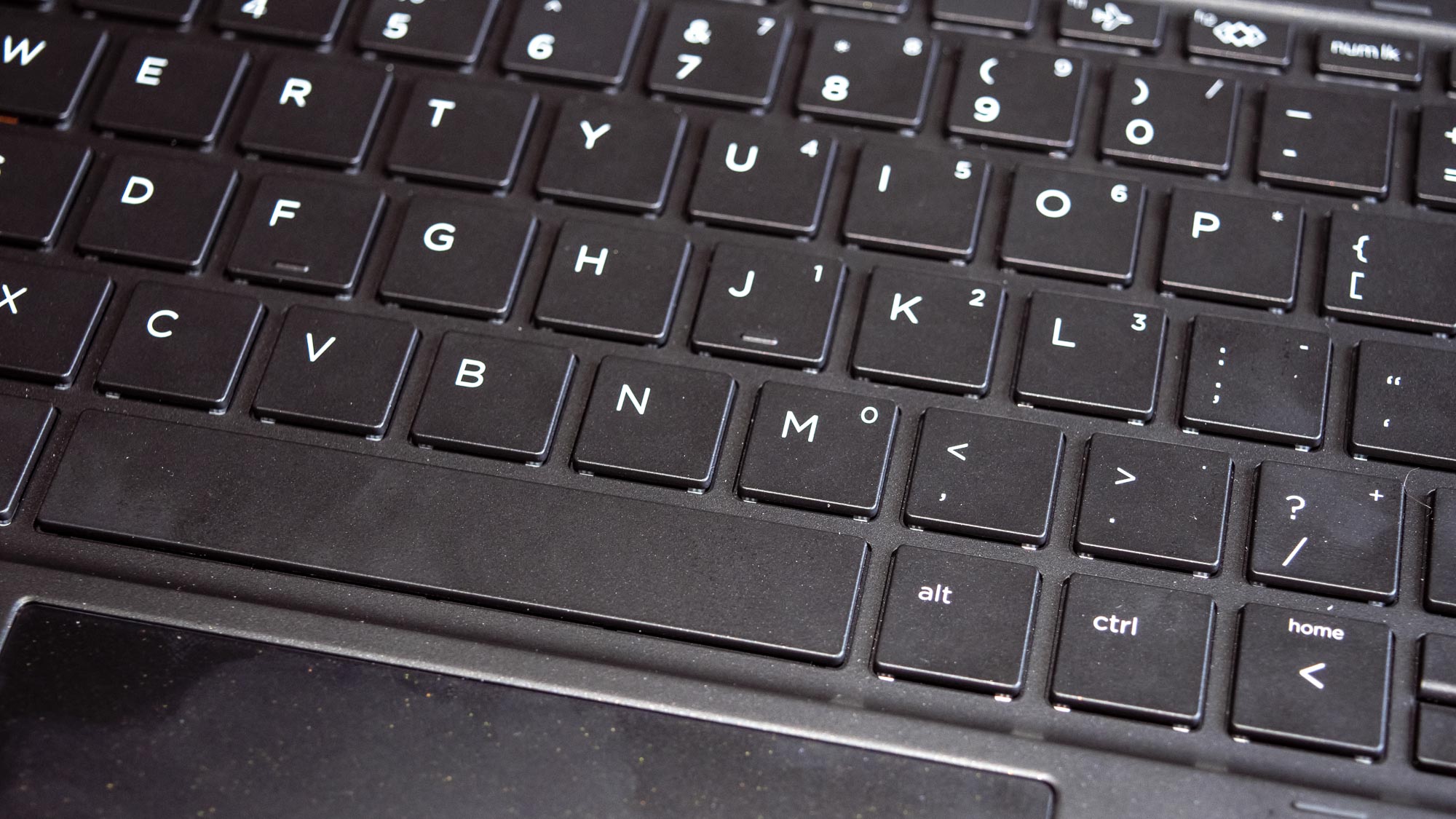
The Elite Dragonfly Max keyboard is dense but not crowded. It is restricted to a tenkeyless format due to the laptop’s diminutive size, but I never felt as though I would trip over my own hands while typing and never found myself hitting one key when I meant to press another. A welcome addition to the keyboard is a number pad that’s laid over the right side of the keyboard and enabled with a dedicated num lock key.
When using the keyboard with the 10fastfingers typing test, I scored 47 words per minute at 95% accuracy, which is marginally better than the 43 wpm I scored when using my full-size mechanical keyboard.
Anyone that’s used the keyboard on an HP laptop in the past won’t find any surprises here, with its slightly clicky, chiclet-style keys. It may not deviate from tradition, but the backlit keyboard remains a solid example of how to accommodate a tenkeyless layout on a relatively small laptop.
The 2.6 x 4.3-inch multi-point touchpad is smooth and responsive, it also provides enough space to quickly navigate without a mouse, while being small enough to not get in the way. The touchpad also feels more clicky, in a good way. I’ve used trackpads on a variety of older HP ultrabooks and this one offers some of the punchiest haptic feedback of the lot without feeling heavy. This may not feel like a significant improvement unless you have strong feelings about trackpads, but it's definitely a welcome change.
HP Elite Dragonfly Max review: Performance
- Good CPU performance should zip through daily tasks
- Sluggish file transfer rates and video editing performance
Many of the improvements to the Dragonfly Max are under the hood. Unfortunately, they don’t do much to set this laptop apart from its peers. The biggest change is in the CPU, which has been upgraded to an 11th gen Intel Core i7-1185G7 which was able to hit 4,928 in our Geekbench 5.4 multicore benchmark. That's a respectable score that places it squarely between the Microsoft Surface Laptop 4 (4,829) and Dell XPS 13 (5,420).
Our configuration of the Dragonfly Max included a 512 GB SSD which managed to duplicate 25GB of files at a speed of just over 558.5 MBps. This makes it one of the slower ultrabooks we've tested, dragging behind the Microsoft Surface Laptop 4 (562 MBps) and the Dell XPS 13 (742 MBps).
The Elite Dragonfly Max didn't fare much better in our Handbrake video editing test, which tasks the laptop with transcoding a 4K video down to 1080p. The HP Elite Dragonfly Max pulled it off in 19:44, placing it behind similarly-sized laptops like the Surface Laptop 4 (17:01) and XPS 13 (18:12).
While there isn’t a dedicated graphics card, HP has still shown the GPU some love, this time opting for an Intel Iris Xe intel integrated GPU. That isn’t quite enough power to handle any serious gaming, but less demanding or graphically-intensive games should still be quite playable. The Dragonfly Max managed to hit around 18.4 frames per second in our Civilization 6: Gathering Storm benchmark., which is better than the Dell XPS 13 (14.4 fps) but worse than the Samsung Galaxy Book Pro 360 2-in-1 (26.9 fps).
HP Elite Dragonfly Max review: Battery life
- Great 13.5-hour battery life
A considerable improvement with this year’s model of the Dragonfly is the battery life, it took our battery test a little over 13.5 hours of web surfing at 150 nits of brightness to fully drain the battery, making the Dragonfly Max one of the longest-lived ultrabooks we've tested.
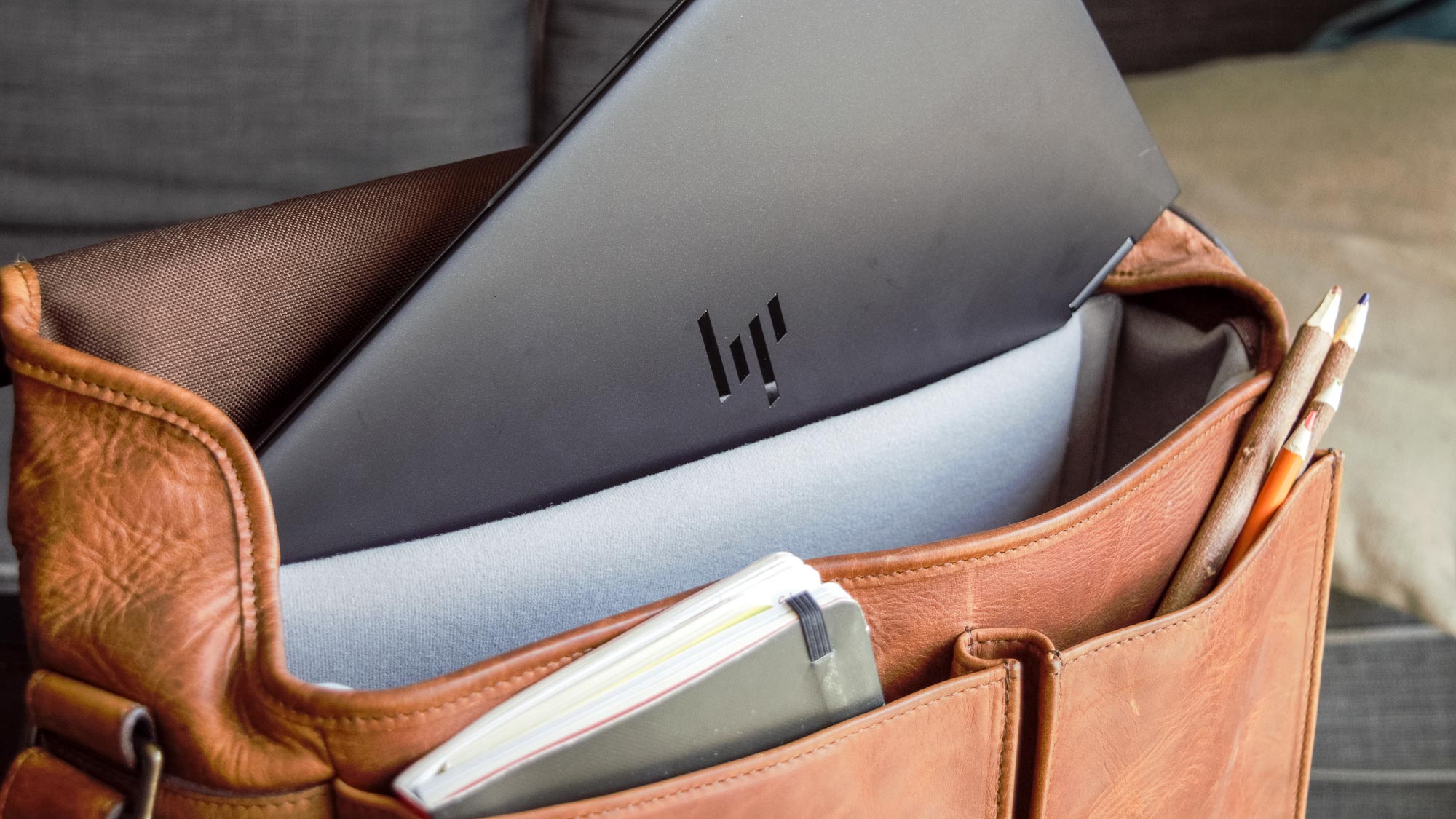
It's neck and neck with the Samsung Galaxy Book Pro 360 (13.5 hours) and quite a bit better than the OLED-equipped Dell XPS 13 (8 hours) and Microsoft Surface Laptop 4 (10:46).
HP Elite Dragonfly Max review: Heat
- Laptop bottom hit uncomfortable 102 degrees in tests
- However, it does remain quiet
The Dragonfly Max is a laptop that certainly lives up to its name. During our thermal load test, the rear underside of the chassis got up to 102 degrees Fahrenheit, while the rest of the laptop remained significantly cooler, with the touchpad warming up to just over 77 degrees. This isn’t dangerously high, but certainly above average when stacked against other ultrabooks like the Samsung Galaxy Book Flex, which topped out at 92 degrees.
The laptop definitely exceeds our 95 degree comfort standard, but it never got hot enough to feel uncomfortable on my lap. However, what really impressed me was how quiet the Max was under load. Even with multiple applications running simultaneously, it was barely audible -- to the point I had to double-check that the fans were actually running.
HP Elite Dragonfly Max review: Verdict
The HP Elite Dragonfly Max is a pleasure to work on, but all the while, I had to ask myself: Who is this for? The only answers I could muster were either a jet-setting business professional or a secret agent. Unfortunately, I am neither of those things and would gladly trade some of the exclusive features of the Dragonfly Max for a few hundred dollars off the price tag.
While I could definitely see this versatile mobile platform being useful for professionals in discretionary fields, like nurses or social workers, the price point makes the Dragonfly Max seem inaccessible except to those for whom money is no object. If you're looking for a similarly-equipped 2-in-1 that's about a thousand bucks cheaper, consider the Samsung Galaxy Book Pro 360 — it doesn't offer quite as much storage or as many business-minded features, but it does have a gorgeous AMOLED display and a much more reasonable price tag.
Tom's Guide upgrades your life by helping you decide what products to buy, finding the best deals and showing you how to get the most out of them and solving problems as they arise. Tom's Guide is here to help you accomplish your goals, find great products without the hassle, get the best deals, discover things others don’t want you to know and save time when problems arise. Visit the About Tom's Guide page for more information and to find out how we test products.
